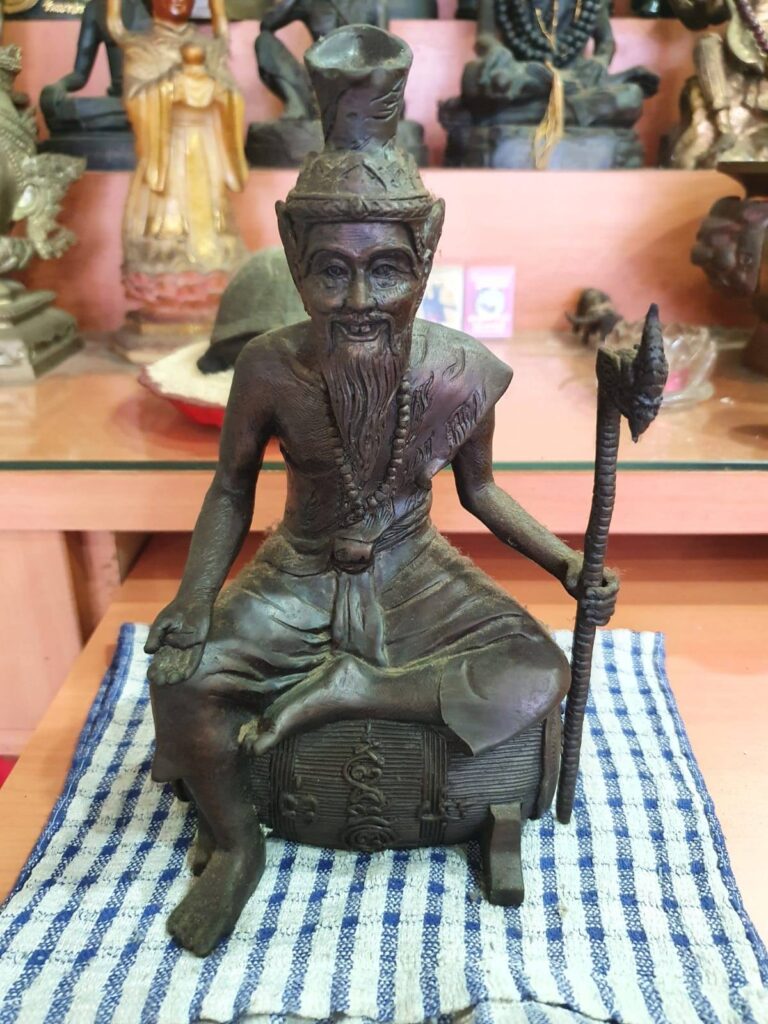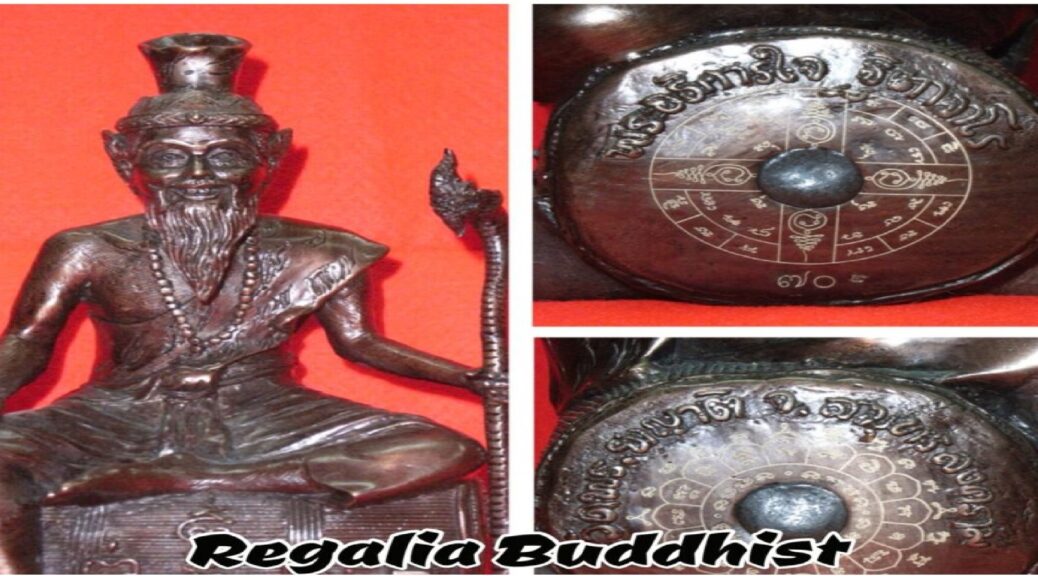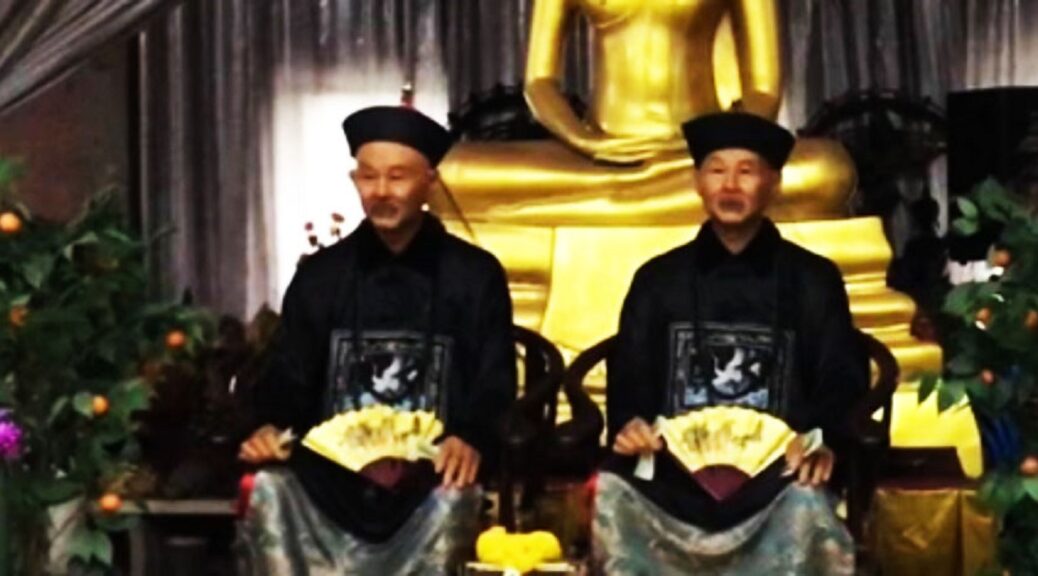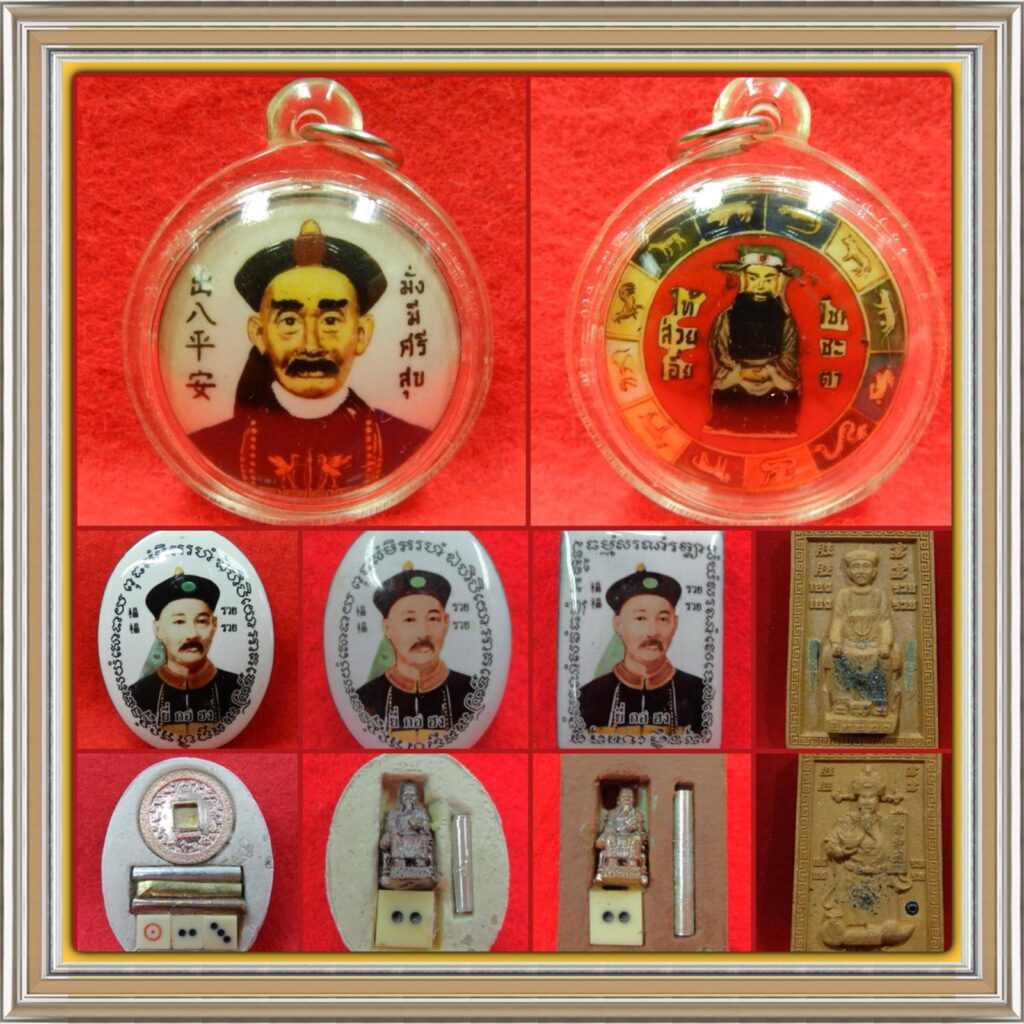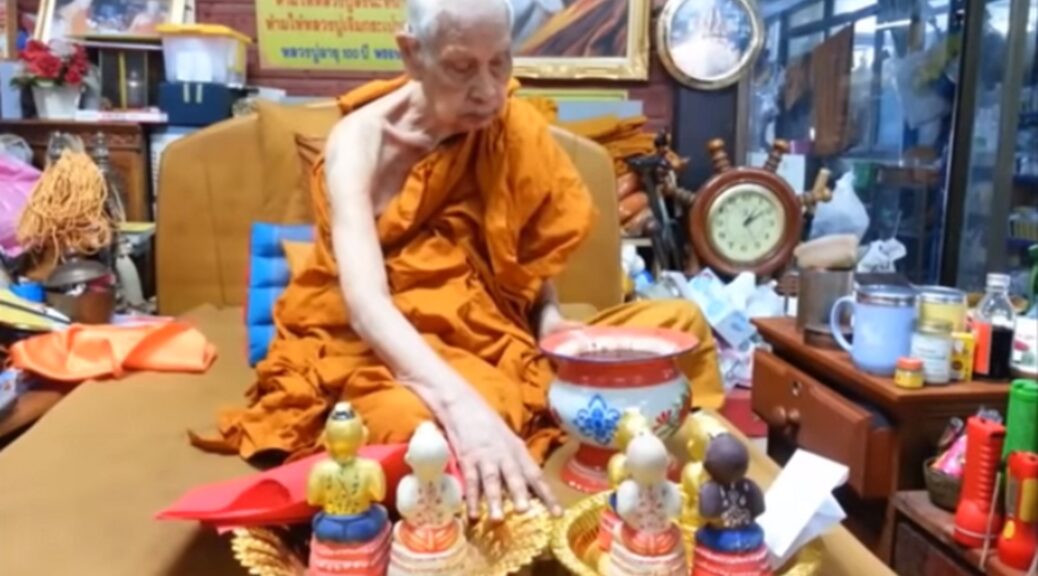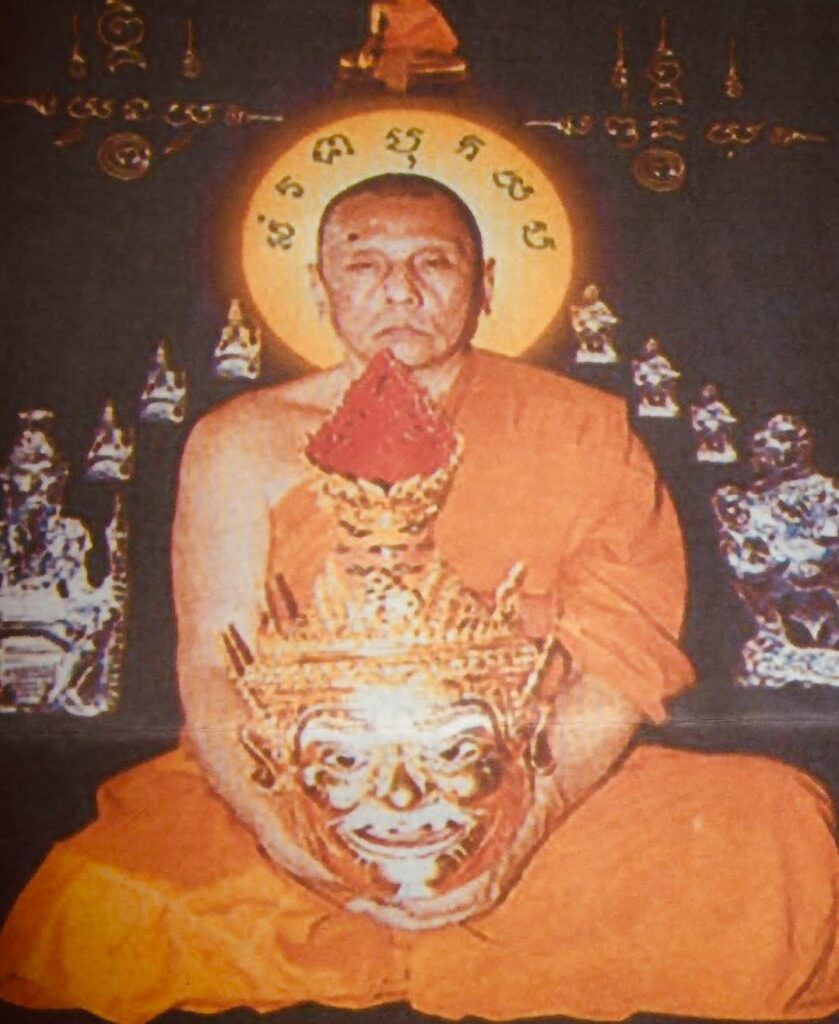
Rheesi Phra Prathit Phai is the ancestral Rheesi of Luang Phor Jai Thitajaro of Wat Payayat, Amphawa, Amphawa District, Samut Songkhram. Rheesi Phra Prathit Phai is one of the main 108 Rheesi and the teacher of Hanuman. He is a known problem solver, be it magical, hypothetical, or practical and is highly respected and revered.
A Brief Legend
A long time ago, King Gaudom of Muang Saket who without a successor decided to forgo his kingdom and retreat into the forest as a Rheesi. His beard grew so long that sparrows came and built their nests. One day, a sparrow said to Rheesi Gaudom that he was a sinner and a deserter without sons and daughters and chose to elude by becoming a Rheesi. Infuriated, Rheesi Gaudom used his magical power and created a woman Nang Kalachana. Both of them lived together until she had a daughter named Nang Swaha.
Later, Lord Indra the Sun God, who wanted to consolidate their power to help Lord Vishnu defeat his enemies, impregnated Nang Kalachana causing her to give birth to a son, Phraya Katak. When Rheesi Gaudom found out about it, he dropped the two children including Nang Swaha into the water and prayed that if anyone is his child, swim back to him, if not, turn into a monkey and be banished into the forest. Only Nang Swaha swam back. Phraya Katak was turned into a monkey and scurried away into the forest. Rheesi Gaudom was also very angry with Nang Kalachana and cursed her to be turned into a stone. In retaliation, Nang Kalachana cursed her own daughter, Nang Swaha, to stand on one leg and eat the wind in the foothills of the universe and will pass the curse of Rheesi Gaudom on Phraya Katak to his grandchildren who shall also be monkeys.
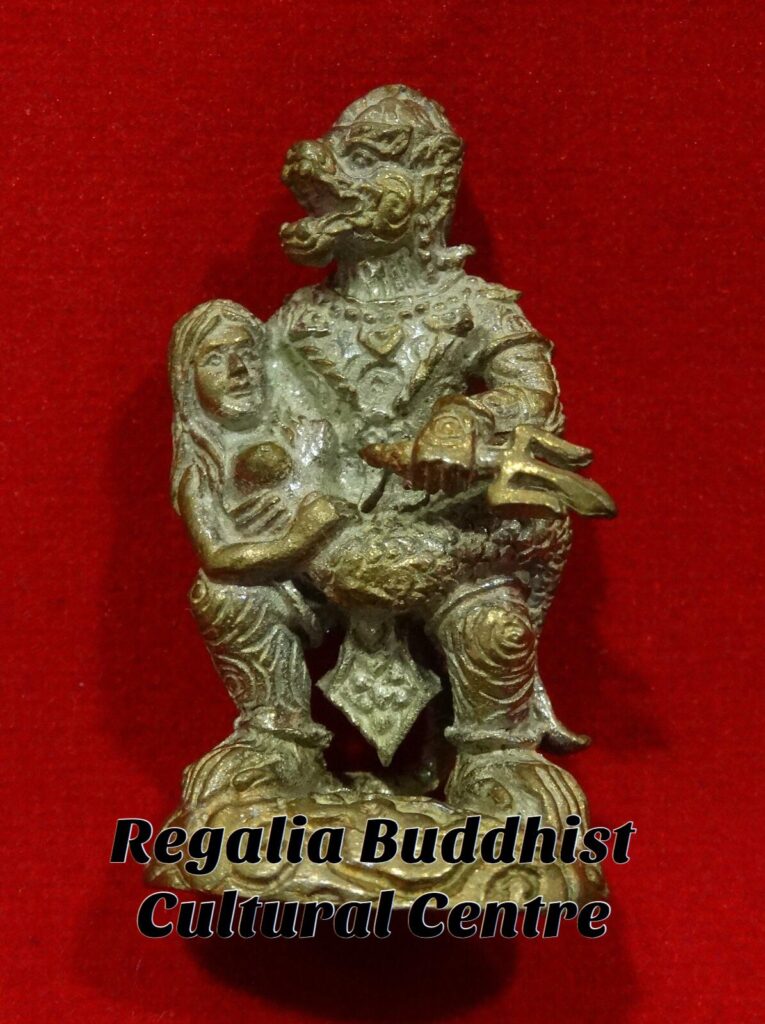
Phra Phai, the Storm God released Nang Swaha from her mother’s curse when she gave birth to their son Hanuman, the Monkey God. When Phra Phai brought Hanuman to visit Lord Shiva, the latter created a great spell and turned Hanuman into an immortal with a body resistant to all weapons and, if killed, will be revived with just a blow of the wind. With such great powers, Hanuman quickly rises to become a great Warrior God and has defeated many strong enemies.
However, at one time, when Hanuman fought with a powerful giant Brlaikalpa he was surprised that he could not even catch Brlaikalpa, because the giant Brlaikalpa has rejuvenated with oil, so that the body is so oily that nothing could hold on to it. Hanuman thought of a Rheesi living in the nearby forest and flew to ask the Rheesi Prathit Phai how he could defeat Brlaikalpa. Rheesi Prathit Phai, afraid of sin, refused to tell Hanuman, but he picked up some sand and dust and sprinkled it into the air. Immediately, Hanuman broke into wild laughter and flew back to fight the giant Brlaikalpa. Hanuman ran so fast in circles around Brlaikalpa, causing the sand and dust to fill the air that when settled on Brlaikalpa’s body caused it to lose its oiliness. Thereafter, Hanuman had sought advice from Rheesi Phra Prathit Phai so much so that he honored Rheesi Phra Prathit Phai as his teacher.
Rheesi Phra Prathit Phai Nang Khlong
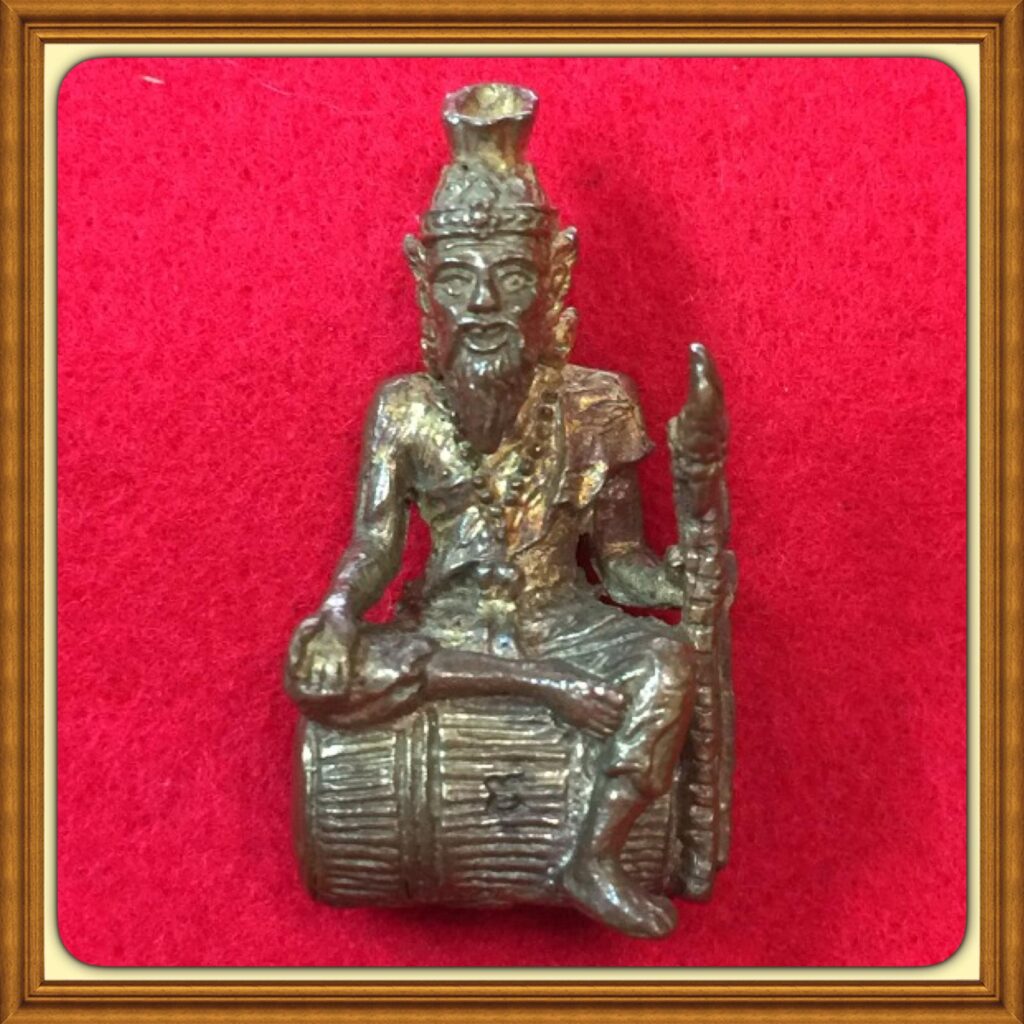
Luang Phor Jai has a deep understanding of the magical power of his ancestral Rheesi Phra Prathit Phai and what his ancestral Rheesi can do to help believers. Therefore, in year 2552, he made and consecrated his ancestral Rheesi Phra Prathit Phai in the style of the left hand holding a magic wand to support the divine destiny of the worshipers, the right in the posture of wealth fetching, and sitting above the large Tabor drum, the symbol of the Mae Klong River Basin which means having power, honor, and reputation. Following his lineage of Sai Mae Klong sect, Luang Phor Jai followed the ancient texts using the Sondhi method in the creation of this batch of statues and amulets.
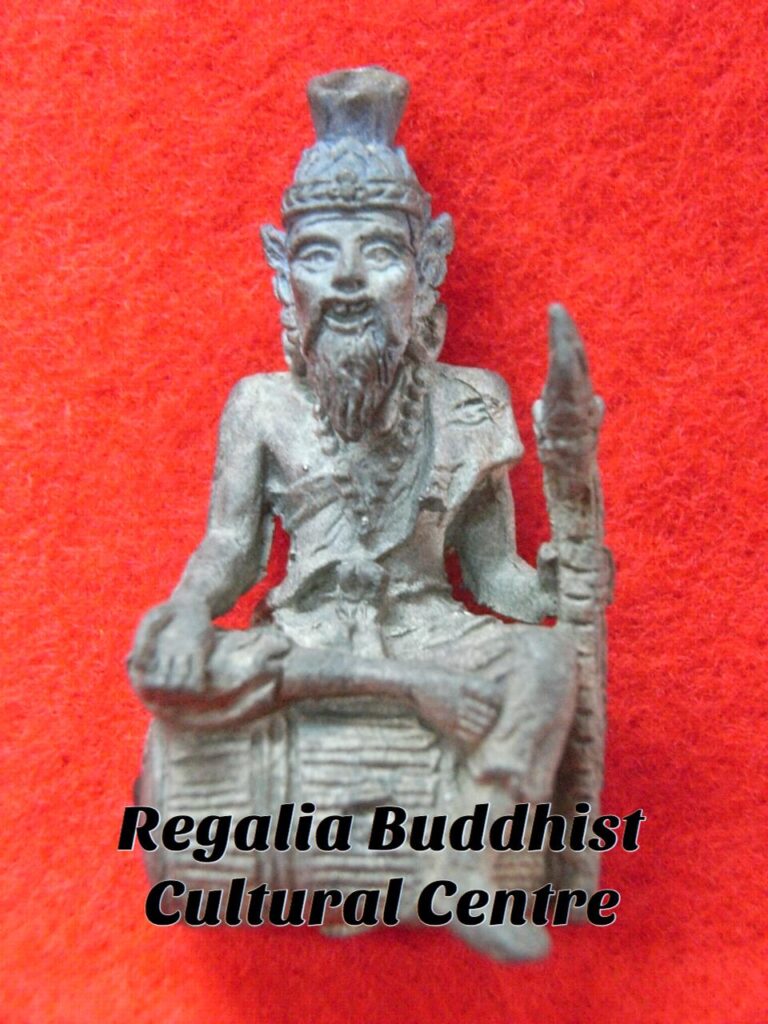
Under the Sondhi method, an auspicious time of Sittichok was chosen for the casting ritual so that when combined it promotes career, finance, luck, and wealth to flow continuously. He also invited several guru monks from the inner path to help perform a special Putthapisek ceremony and they include Luang Por Kong of Wat Bang Kraphom, Luang Phor Nueng of Wat Chulamanee, Luang Phor Puek of Wat Suan Luang, Luang Phor Nu of Wat Phumarin, Luang Phor Kae of Wat Maenam, Luang Phor Yot of Kaew Charoen, Luang Phor Noi of Wat Pak Klong Temple, and et cetera.

